When SQL Image Viewer identifies a DICOM image, it will display it accordingly in the results panel:
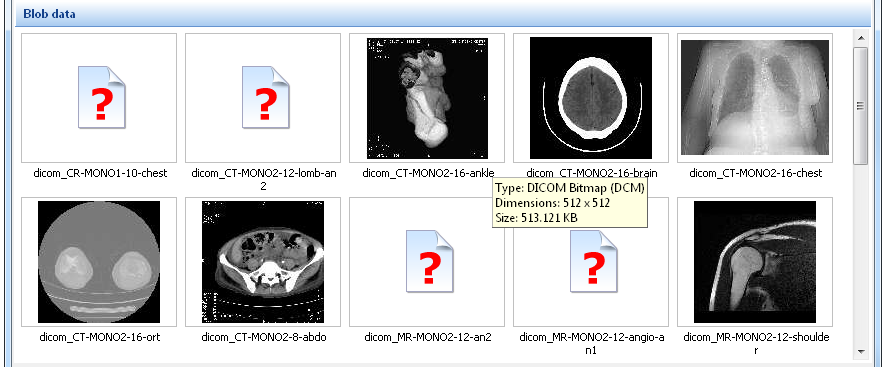
|
If SQL Image Viewer fails to identify the image as a DICOM image, you can force it by adding a 'sivdatatype' column in your result set, with the value 'dcm' e.g.
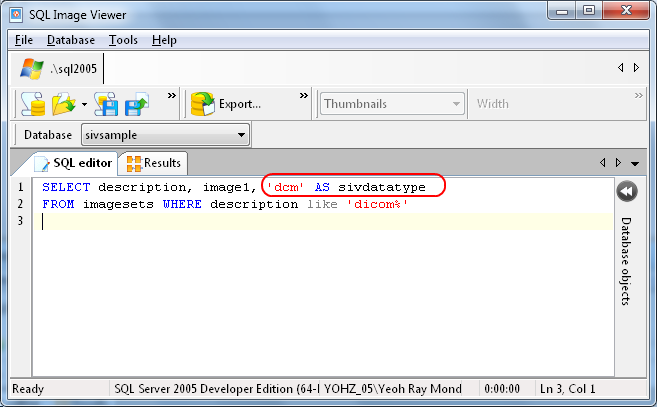
|
What this does is to tell SQL Image Viewer that when it fails to identify the image type stored in the field, it should look at the type specified in the 'sivdatatype' column, and try to display the image accordingly. In our previous result set, not all the images conformed to the standard DICOM format. However, by using the 'sivdatatype' column to tell SQL Image Viewer to try loading the images as DICOM images, we can display the other images.
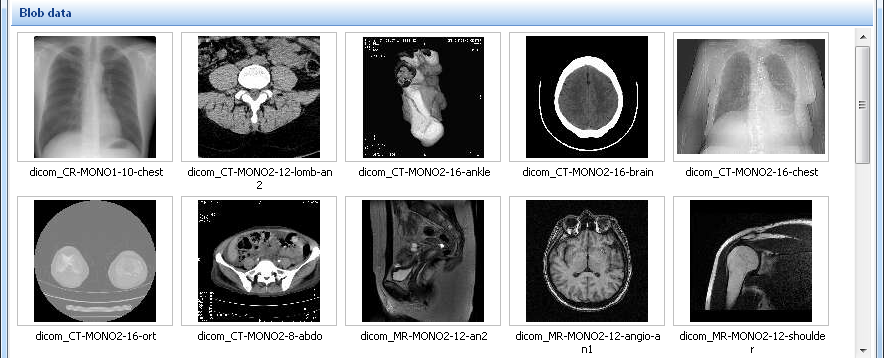
|
If you have a DICOM image that cannot be displayed using SQL Image Viewer, even when using the 'sivdatatype' method, please send a copy of the image to us at support@yohz.com, and we'll try to add support for that particular DICOM format.
When you double click on any one of the DICOM images, it will be displayed in the 'Image viewer' e.g.
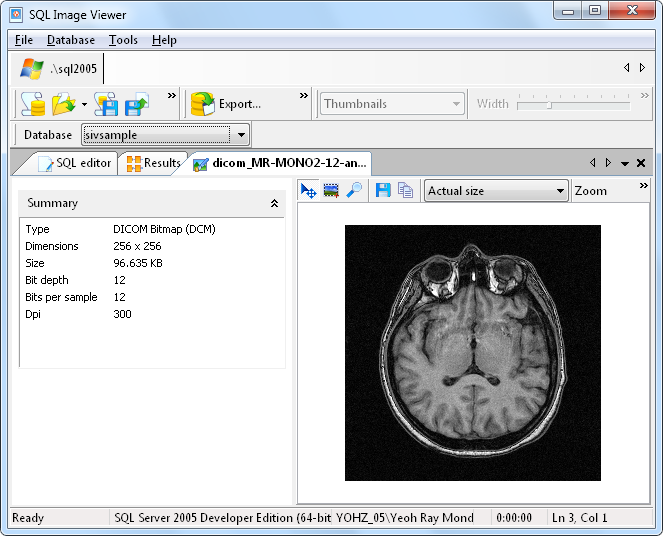
|
DICOM files that contain multiple images will be displayed in a filmstrip e.g.
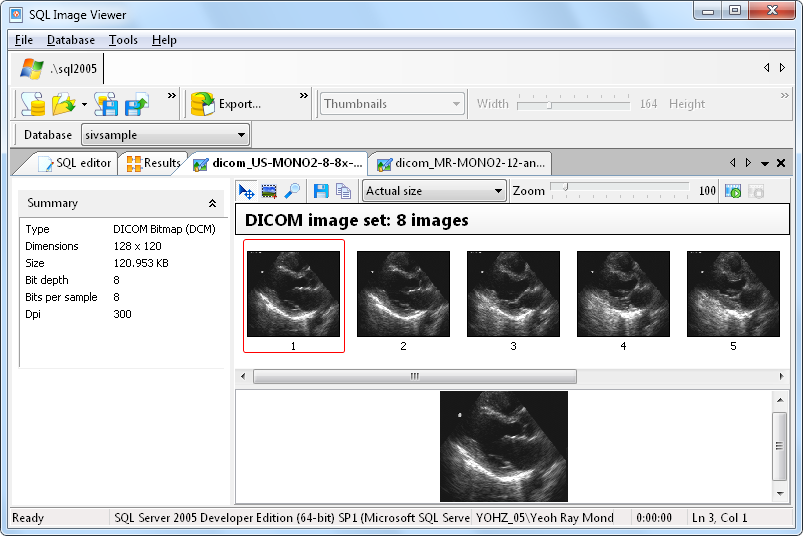
|

